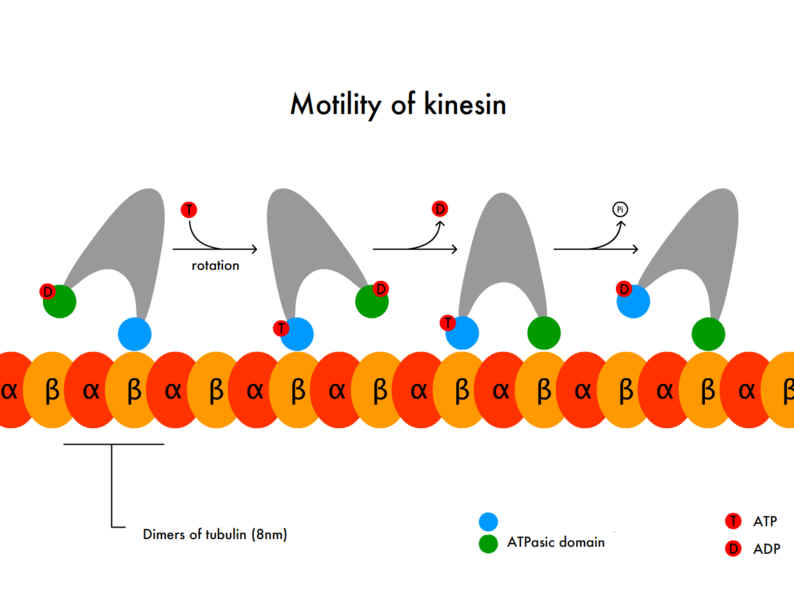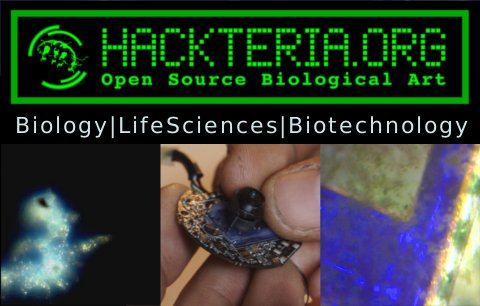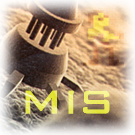The Hounted House of Nano – Nano-Schmano, nanoPunk and the hacking of future (Working title)
Nano is all around
Nano is future, future will be nano
Nano colour, nano structures, nano machines, nano biology
Intelligent dust and elevators to outer space
We are apparently now in a situation where modern technology is changing the way people behave, people talk, people react, people think and people remember. And you encounter this not only in a theoretical way, but when you meet people, when suddenly people start forgeting things, when suddenly people depend on their gadgets, and other stuff, to remember certain things. This is the beginning, its just an experience. But if you think about it and you think about your own behavior, you suddenly realize that something fundamental is going on.
... It's the question: what is important, what is not important, what is important to know? Is this information important? Can we still decide what is important? And it starts with this absolutely normal, everyday news. (Frank Schirrmacher/Editor FAZ, Germany)
f18institut Ljubljana/Hamburg together with dusjagr labs Zürich will establish an artistic research on nanotechnology, beginning 2010 with their first collaboration.

As the field of nanotechnology is far too broad to be investigated as a whole, we will start with a preliminary project in the field of nano-biotechnology. While nanotechnology deals with all natural and artificial phenomena at the lenghtscale of nanometers, only a few atoms, it is also the meeting point where all modern disciplines merge and have to find a common language. Allthough a real world experience of this nanoworld is difficult to achieve and can only be perceived by the use of modern scientific instruments, logical abstraction and modelling, we will try to develop possible tools to find, build, sensorize, evaluate, see and manipulate biological nanostructures, such as motorproteins and protein-coated nanoparticles. We think that an artistic interpretation of these allows further insight into this world and produce experiencable and metaphorical realities of modern science and technology.
Within the context of a simple approach and DIY philosophy, our tools will be comparable with knowing 3 chords on a guitar and playing punk music, one does not really now the whole context – but gathers experience and examples for new developments – while creating new artefacts.
The project will kick-off with a project presentation and discussion, followed by a intensive reasearch, experimentation and production phase of 10 – 14 days by Doepner and Dusseiller.
We will investigate to create structures, systems and situations with possible artistic value. It is about basic research on how to work on simple ways with nanotechnology, accessible to artists in labs and ateliers, and any more its possibilities for social and artistic value and relevance. Further on the project will consist of audiovisual and physical examples of our developments, as well as of self generated and semi professional tools for biological nano experiments.
Finally we will present an installation, which will represents our research, trials and errors, achievements and critical reflections. The final object should be the [Nano-Schmano] Object, an interactive, nano kinetic light and sound installation, based on Kinesin Motor Proteins and protein-coated nanoparticles, in which the visitor can change and controll through electromagnetic force and light emmissions the patterns and behaviour of those nanostructures.
Their actual activities/reactions will be audiovisually processed and translated to be observable, audible and graspable.
Appendix:
Motorproteins
Motorproteins are a family of abundant biomolecules that can perform mechanical work. For example as active proton pumps rotary motors in the cellular membrane, the acto-myosin machinery of muscle contraction or the kinesins, which are responsible for transport of material through a cell by "walking" on microtubule filaments. With the merging of biology, robotics and engineering at the nanoscale, scientists have developed hybrid systems that use these biological machinery for engineering applications, such as microscale transport networks, so called NanoShuttles (Vogel V, Hess H, NanoShuttles: Harnessing motor proteins to transport cargo in synthetic environments, Lecture Note Proceedings, Nobel Symposium 131 (2007) 367-383).

(Image from Hess, H. MATERIALS SCIENCE: Enhanced: Toward Devices Powered by Biomolecular Motors. Science 312, 860-861(2006). 
(Image from Wikipedia, the free encyclopedia. at <http://en.wikipedia.org/wiki/Kinesin>)
Authors:
Stefan Doepner
Dr. Marc Dusseiller
Producer:
f18institut, Ljubljana
dusjagr labs, Zürich
Kapelica Gallery
Kud Obrat
About the authors:
Stefan Doepner studied Painting and Experimental Film at the University of Arts Bremen.
Doepner's focus is on the artistic exploration of today's use, reception and rules of technology, to analyze and understand contemporary systems and techniques he acquires the method of reinvention. In his work Doepner tries to profane the technological glorification and to grasp the relations of society, technology, sound, science and every day life through meditation and mediation.
1992 Doepner participated at the Documenta9 project Van Gogh TV; 1993 co-founded MAB, Bremen; 1995 MediaLab @ sea, Hamburg; 1996 co-founded f18institut, Hamburg; since 1997 on going collaborations with Stelarc; 2002 artgendaTV within Artgenda Hamburg; 2004 Playground Robotics, Basel, Bern Solothurn; 2006 participated at Steirischer Herbst, Graz and Smart 2006, Bremen. 2007 co-founded Cirkulacija2, Ljubljana; 2008 participation at Synthetic Times: Media Art China 2008, Beijing and at Ars Electronica08, Linz.
www.f18institut.org, www.obrat.org
Marc R. Dusseiller is a transdisciplinary scholar, lecturer for Micro- and Nanotechnology and artist. He works in an integral way to combine science, art and education. He performs DIY-workshops in lo-fi electronics, music and robotics, has made various short movies and is currently developing means to perform biological science (hackteria | open source biological art) in a DIY fashion in your kitchen or your atelier. He is also co-organizing dock18, Room for Mediacultures, and various other engagments like the diy* festival as the president of the Swiss Mechatronic Art Society, SGMK.
http://www.dusseiller.ch/labs, http://www.mechatronicart.ch
About Hackteria/
Hackteria is a collection of Open Source Biological Art Projects instigated in February 2009 by Andy Gracie (UK), Marc Dusseiller (CH) and Yashas Shetty (IN). The aim of the project is to develop a rich web resource for people interested in or developing projects that involve DIY bioart, open source software and electronic experimentation. As a community platform hackteria tries to encourage the collaboration of scientists, hackers and artists to combine their experitise, write critical and theoretical reflections, share simple instructions to work with lifescience technologies and cooperate on the organization of workshops, festival and meetings.
http://hackteria.org/







0 Responses to “NanoPunk”
Leave a Reply